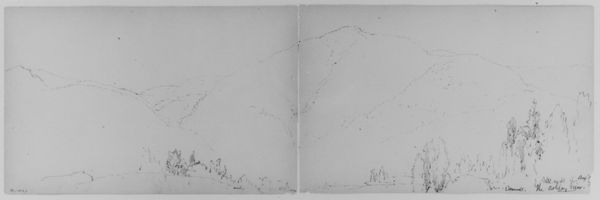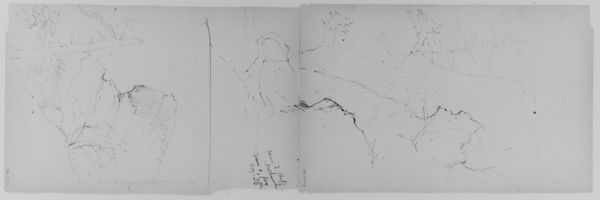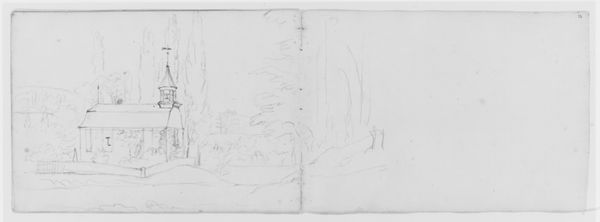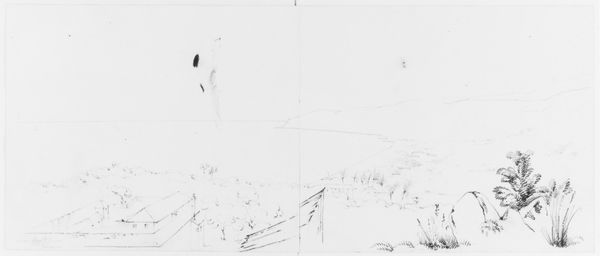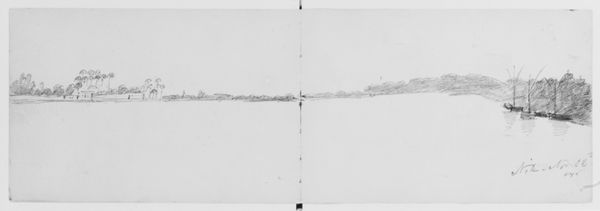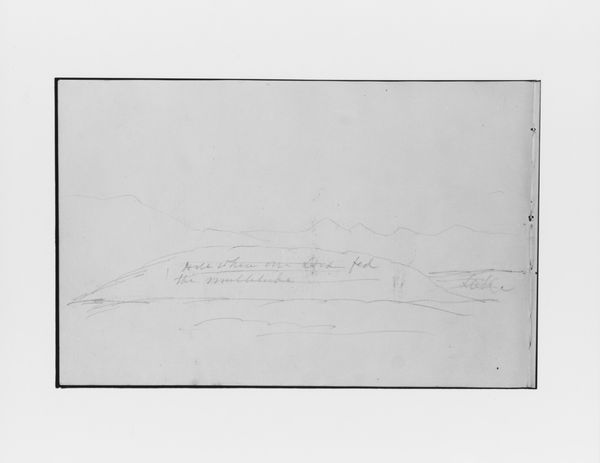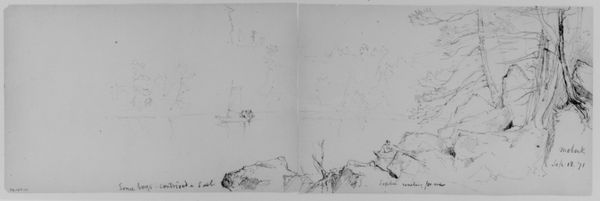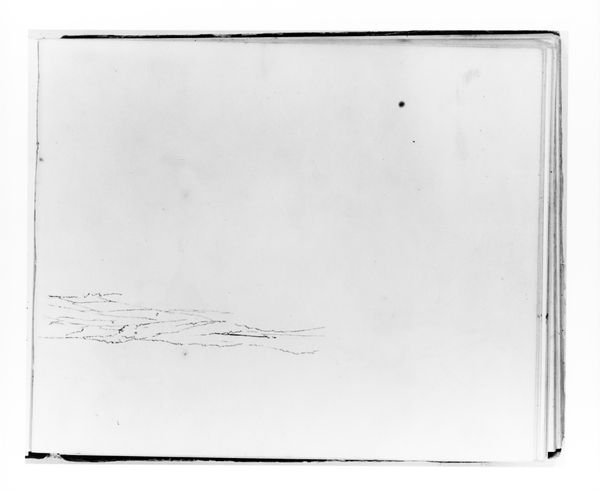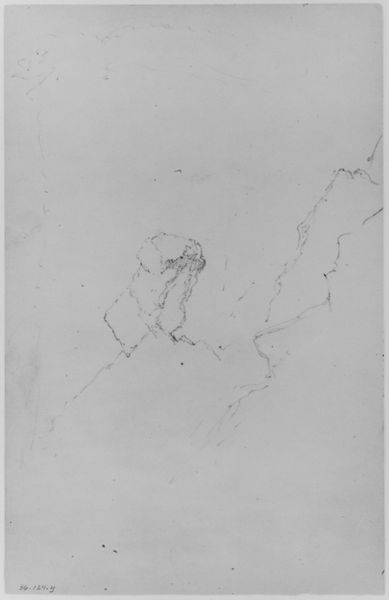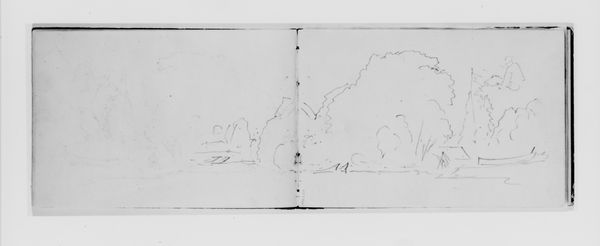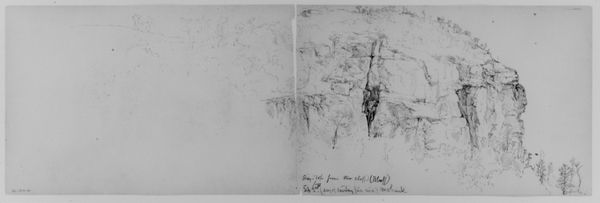
Gate of the Highlands, Mohonk, 1871 (from Sketchbook) 1870
0:00
0:00
drawing, ink, pencil
#
drawing
#
landscape
#
ink
#
pencil
#
hudson-river-school
#
line
Dimensions: 5 1/2 x 8 3/4 in. (14 x 22.2 cm)
Copyright: Public Domain
Curator: This delicate drawing, “Gate of the Highlands, Mohonk, 1871” by Daniel Huntington, offers a glimpse into the artist's sketchbook. Created with ink and pencil, it showcases his observation of the Hudson River Valley. What are your first impressions? Editor: It feels incredibly serene, almost hauntingly so. The stark lines against the off-white ground evoke a sense of quiet vastness, a stillness that almost borders on melancholic. It gives me a deep longing to see the landscapes the Hudson River School so aptly documented. Curator: The drawing is an interesting example of the Hudson River School's focus on capturing the sublime in nature, yet it’s a sketch rather than a finished painting. This begs the question, how does its status as a preliminary work influence our understanding of it? Editor: That's precisely the crux of its intrigue! It strips away the romantic idealization often found in paintings, exposing the bare bones of artistic vision. It offers a unique, almost intimate glimpse into Huntington's process. It seems also relevant to mention how the indigenous presence of this location became obscured by white colonial settlement and erasure during this period. Curator: The use of ink and pencil speaks to practicality. A sketch allows for a rapid translation of observation into form, which seems fundamental in the work. This materiality— the immediate relationship of hand to paper to place — also connects to the nineteenth-century landscape aesthetic linked to economic growth and land exploitation. Editor: It raises fascinating questions about power dynamics at play. While Huntington attempts to depict the beauty and sublimity, is he also implicated in a system of erasure? How do his choices of what to represent and what to leave out, reveal broader societal attitudes and impact marginalized people in America during this time? Curator: Seeing it as an artifact connected to both aesthetic appreciation and potential erasure certainly complicates the traditional view. It prompts us to ask questions about representation and the responsibilities artists hold. Editor: Absolutely. And in considering this dialogue between aesthetics and historical context, it highlights the critical importance of examining art through a wider socio-political lens. The landscape becomes more than a vista, but an entry point into a complex web of interconnected experiences and historical processes.
Comments
No comments
Be the first to comment and join the conversation on the ultimate creative platform.

